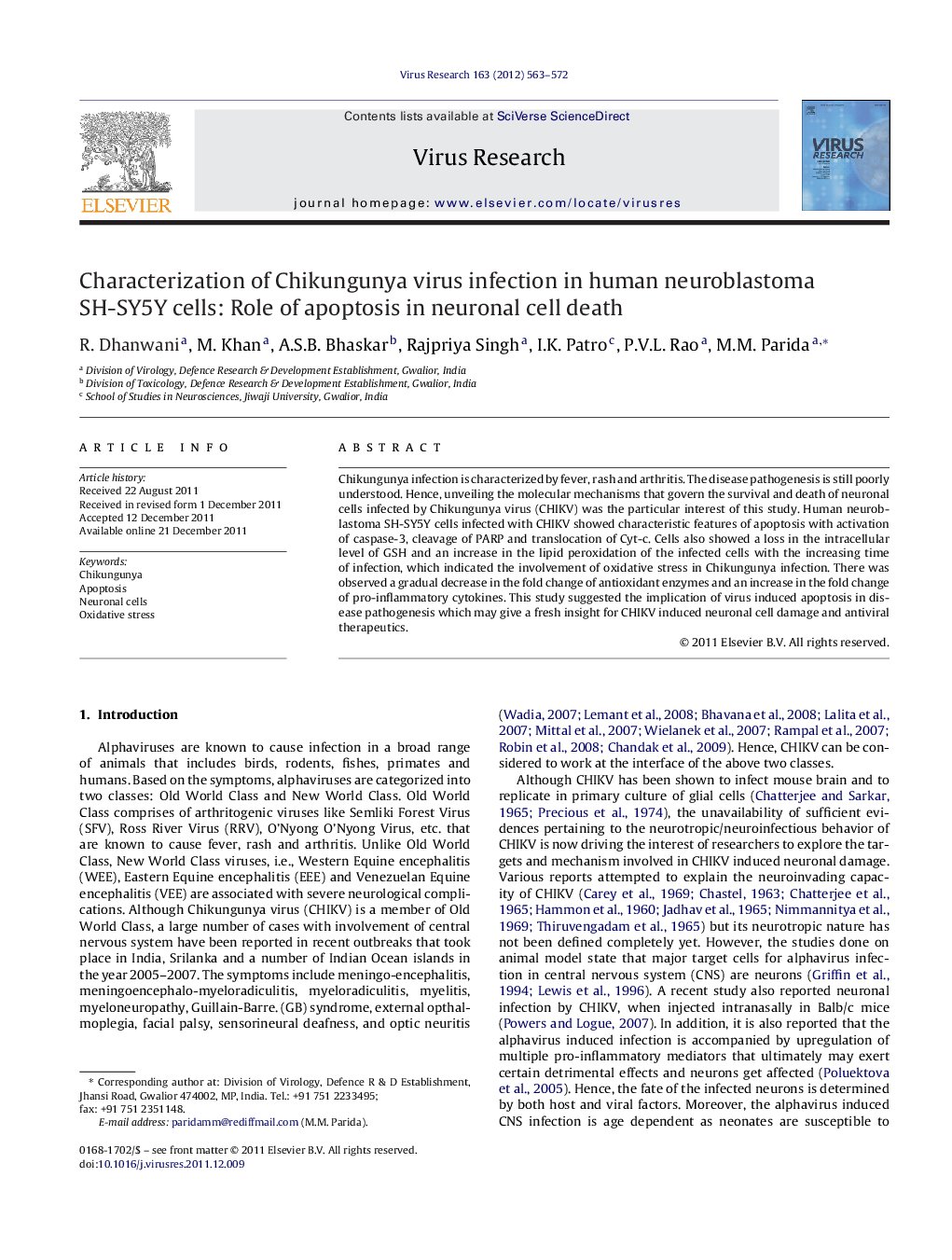| Article ID | Journal | Published Year | Pages | File Type |
|---|---|---|---|---|
| 3428903 | Virus Research | 2012 | 10 Pages |
Chikungunya infection is characterized by fever, rash and arthritis. The disease pathogenesis is still poorly understood. Hence, unveiling the molecular mechanisms that govern the survival and death of neuronal cells infected by Chikungunya virus (CHIKV) was the particular interest of this study. Human neuroblastoma SH-SY5Y cells infected with CHIKV showed characteristic features of apoptosis with activation of caspase-3, cleavage of PARP and translocation of Cyt-c. Cells also showed a loss in the intracellular level of GSH and an increase in the lipid peroxidation of the infected cells with the increasing time of infection, which indicated the involvement of oxidative stress in Chikungunya infection. There was observed a gradual decrease in the fold change of antioxidant enzymes and an increase in the fold change of pro-inflammatory cytokines. This study suggested the implication of virus induced apoptosis in disease pathogenesis which may give a fresh insight for CHIKV induced neuronal cell damage and antiviral therapeutics.
► We characterized Chikungunya virus infection in a transformed human neuroblastoma cell line. ► The neuronal cell death was mediated through caspase dependent apoptotic pathway. ► Oxidative stress and inflammation were also found to be involved in CHIKV induced neuronal cell damage. ► The study helps in defining the neurovirulent/neurotropic behavior of CHIKV and provides a fresh insight for antiviral therapeutics.
